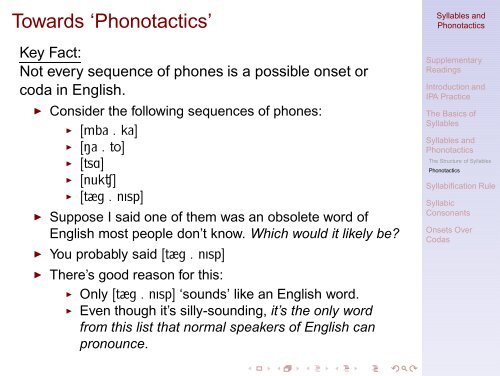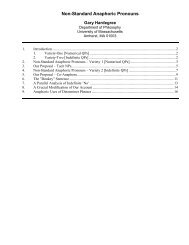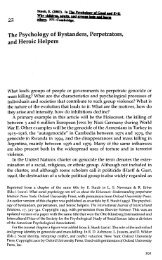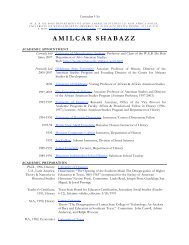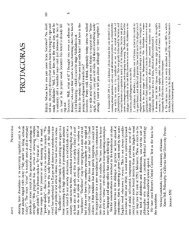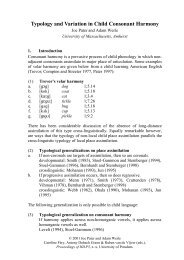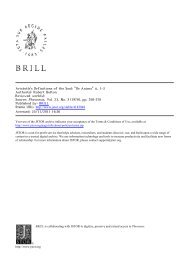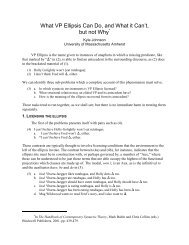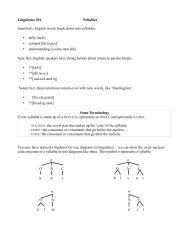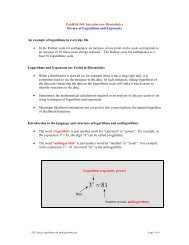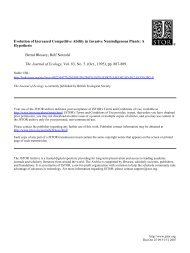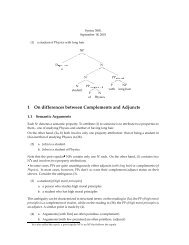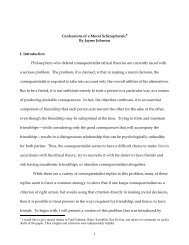Syllables and Phonotactics
Syllables and Phonotactics
Syllables and Phonotactics
Create successful ePaper yourself
Turn your PDF publications into a flip-book with our unique Google optimized e-Paper software.
Towards ‘<strong>Phonotactics</strong>’<br />
Key Fact:<br />
Not every sequence of phones is a possible onset or<br />
coda in English.<br />
◮ Consider the following sequences of phones:<br />
◮ [mba . ka]<br />
◮ [Na . to]<br />
◮ [tsA]<br />
◮ [nukÙ]<br />
◮ [tæg . nIsp]<br />
◮ Suppose I said one of them was an obsolete word of<br />
English most people don’t know. Which would it likely be?<br />
◮ You probably said [tæg . nIsp]<br />
◮ There’s good reason for this:<br />
◮ Only [tæg . nIsp] ‘sounds’ like an English word.<br />
◮ Even though it’s silly-sounding, it’s the only word<br />
from this list that normal speakers of English can<br />
pronounce.<br />
<strong>Syllables</strong> <strong>and</strong><br />
<strong>Phonotactics</strong><br />
Supplementary<br />
Readings<br />
Introduction <strong>and</strong><br />
IPA Practice<br />
The Basics of<br />
<strong>Syllables</strong><br />
<strong>Syllables</strong> <strong>and</strong><br />
<strong>Phonotactics</strong><br />
The Structure of <strong>Syllables</strong><br />
<strong>Phonotactics</strong><br />
Syllabification Rule<br />
Syllabic<br />
Consonants<br />
Onsets Over<br />
Codas


